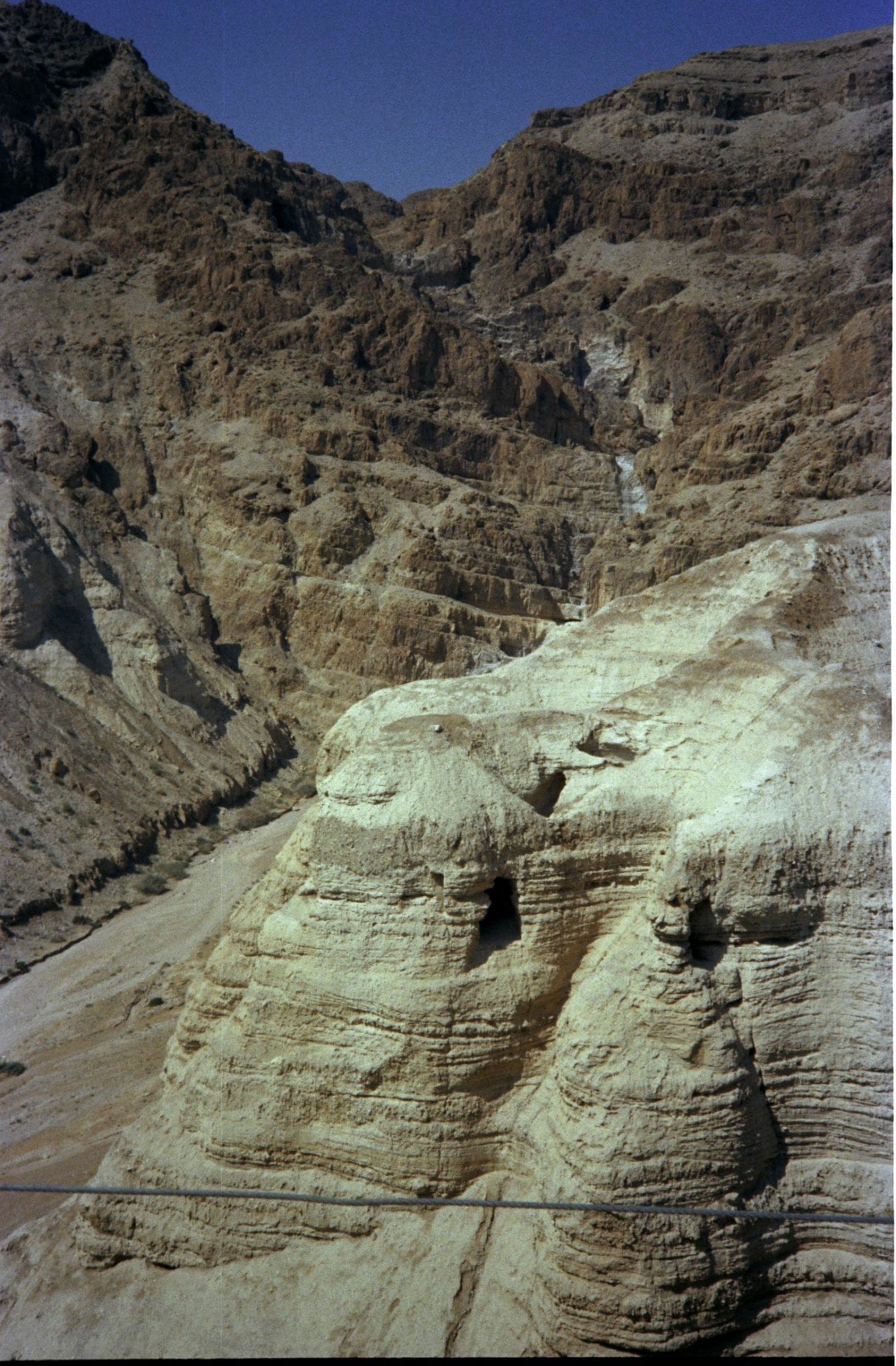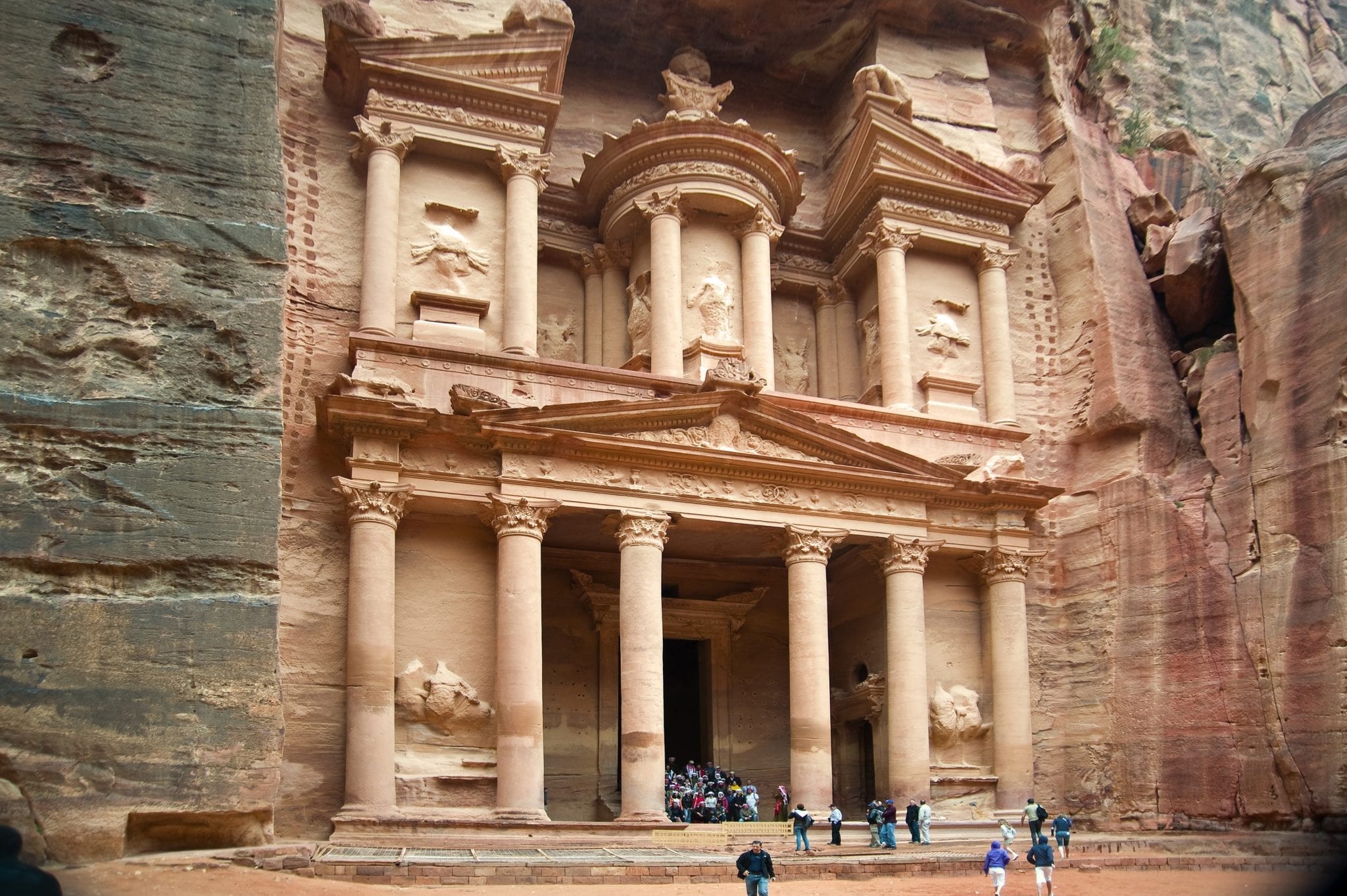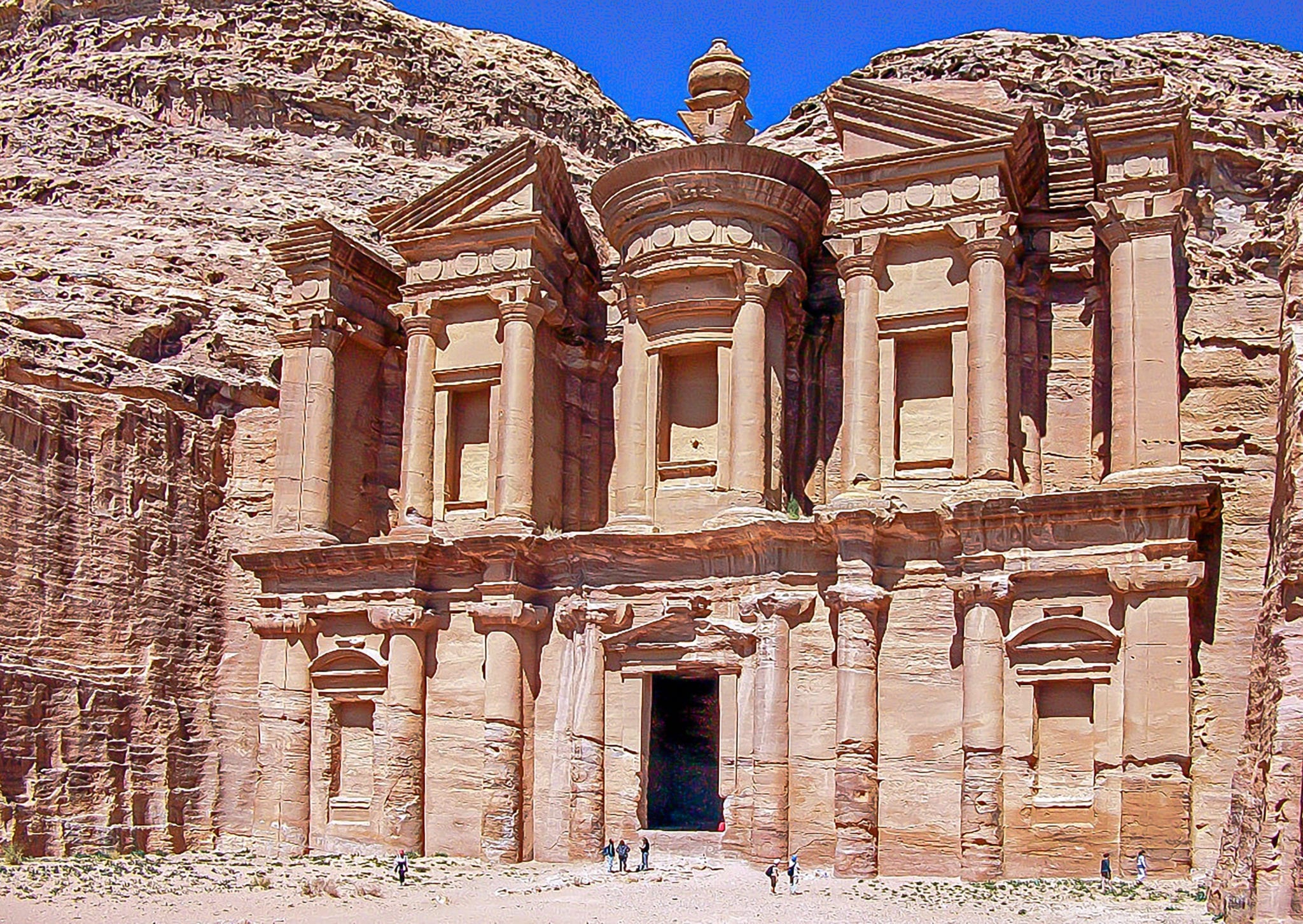After the death of Alexander the Great, the land now comprising Israel and Jordan fell under the successive domination of the Seleucid kings, Rome, Arabs, Ottoman Turks, and the British empire. Lying in almost the center of that area is the Dead Sea. It is actually not a sea but rather a salt-water lake, and is the lowest point on Earth. No life can exist in its waters, which are nearly ten times saltier than that of oceans and contain many minerals in high concentration. Though supposedly very safe for sunbathing because harmful ultraviolet rays are filtered out, wearing sunscreen is still recommended! The Dead Sea was once the site of one of the world’s first health spas, built by Herod the Great (king from 37 to 4 BC). Legends have it that Cleopatra may have used its products as part of her beauty regime.
An invigorating environment
For modern tourists, the Dead Sea is advertised for its “clean and unpolluted air” and its pleasant weather, providing “an invigorating environment that is unlike any other in the world.” According to many non-evidence-based claims, its many minerals nourish the skin and improve hydration, “allowing people to feel and look healthier (and often much younger!).” The minerals penetrate the skin deeply without causing irritation, alleviate discomfort, strengthen skin tissue, rehydrate the skin, improve blood circulation, eliminate toxins, restore depleted minerals, and balance the skin’s natural pH levels. The high sulfur content of its water exfoliates the dead skin cells of eczema and acne and has tremendous healing effects on psoriasis.
Dead Sea Scrolls at Qumram
Visiting tourists, while waiting for controlled trials to support these claims, may wish to turn west and visit the ruins of Qumran, the site of the discovery, in 1947, of the Dead Sea Scrolls, perhaps written by the Essenes. (Fig. 1, 2) These were an exclusive, closely knit, and secretive sect of some 4,000 people scattered in the outskirts of towns and villages living in Roman Judea in the time of Jesus. They were notable for their piety, communal living, the absence of personal property and of money, their celibate priests, and their commitment to strict observance of the Sabbath. Prepared to wait with patience for the arrival of God’s kingdom, they did not eat meat, immersed themselves in water every day, and often lived more than 100 years. Whether they wrote the Dead Sea scrolls is uncertain, and some scholars think the ruins are the remains of an old Roman fort used to hide ancient biblical manuscripts from destruction by occupying forces.
 |
 |
| Figure 1 Rocks at Qumram | Figure 2 To the caves |
The Rose City
Turning south and east, tourists may visit Petra of the Nabateans, an ancient northern Arabic desert tribe that once had a powerful and wealthy kingdom. Eventually annexed by the Romans, it had become, in the second century BC, a regional trading hub by being close to the major trade routes. Petra, the Nabatean capital, was called the “Rose City” for its rose-colored sandstone. It was defensible against enemies by being carved from rock and had at its height an estimated population of 20,000 inhabitants. It remains a favorite site with tourists, who must access it by foot, donkey, or carriage through a long narrow passage before reaching the famous treasury and monastery, also carved in rock and marvels of ancient architecture. (Fig. 3, 4)
 |
 |
| Figure 3 The treasury | Figure 4 The monastery |
Jerash and Mount Nebo
A little away to the north are the ruins of Jerash, one of the wealthiest cities in ancient times. It is noted for its fine Roman and Byzantine ruins, an amphitheater built with impressive acoustical accuracy, and miles of ruins, palaces, and colonnades. (Fig. 5, 6) A little inland from the Dead Sea is Mount Nebo, from where Moses was able to view the land of milk and honey but not allowed to enter it. (Fig. 7, 8) These historic and beautiful sites are situated today in modern Jordan and Israel, countries offering an array of delights for tourists. Visually stunning, they remind one of ancient civilizations endowed with knowledge and perhaps the secrets for eternal youth and wellness!
 |
| Figure 5 Jerash amphitheater |
 |
| Figure 6 Ruins of Jerash |
 |
 |
| Figure 7 View from Mount Nebo | Figure 8 About Mount Nebo |
Note: All images courtesy of Dr. L. J. Sandlow
GEORGE DUNEA, MD, Editor-in-Chief

Leave a Reply